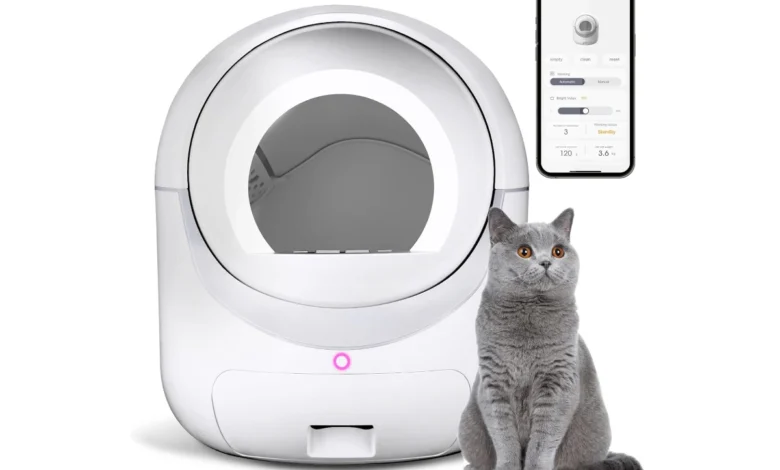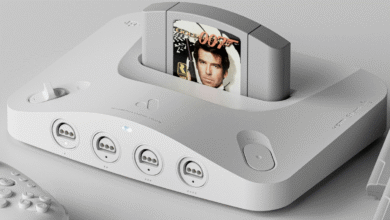The Future of Cat Care: Why the Automatic Litter Box Is Changing Pet Ownership

Cats have always been cherished companions, admired for their independence and grace. Yet, behind the purring and playfulness lies one unavoidable chore: cleaning the litter box. For many cat owners, scooping waste is the least enjoyable part of pet ownership. But today, innovation is reshaping this daily routine. The rise of the automatic litter box is redefining convenience, hygiene, and even the bond between humans and their feline friends.
This article takes a deep dive into the world of automatic litter solutions, exploring their history, technology, advantages, challenges, and what the future may hold.
The Daily Struggle of Traditional Litter Boxes
Every cat owner knows the reality of a standard litter box. You pour in fresh litter, your cat uses it, and soon enough, you’re bending down with a scoop to clean it out. If you miss a day, odors quickly build, and your cat might even refuse to use it.
For multi-cat households, the problem is amplified. Scooping becomes a several-times-a-day activity, and the smell can feel like a never-ending battle. The litter box has long been considered the “necessary evil” of cat companionship.
But technology has a way of transforming even the most mundane parts of life—and litter boxes are no exception.
From Manual Scooping to Automation
The concept of automating litter cleaning isn’t new. Early prototypes emerged in the late 20th century, but they were often bulky, unreliable, or too expensive for the average pet owner. Over the years, advancements in sensors, motors, and waste disposal systems have made these devices far more practical and accessible.
Today’s models are sleek, smart, and designed with both cats and humans in mind. They use motion detection to know when a cat has exited, rotating mechanisms to sift clumps from clean litter, and sealed containers to trap odors. Some even connect to mobile apps, sending real-time updates on your cat’s bathroom habits.
The Automatic Litter Box: A Modern Solution
A Smarter Way to Care for Cats
At its core, an automatic litter box is designed to take over the most unpleasant part of cat care—cleaning waste. Instead of relying on you to scoop daily, these devices use clever engineering to do the job automatically. Waste is separated and stored in a hidden compartment, leaving fresh litter ready for the next visit.
For cat owners, this means fewer chores, less odor, and more peace of mind. For cats, it means a consistently clean environment—something they instinctively crave.
Why Pet Owners Are Embracing Automation
1. Convenience and Time Savings
Life is busy. Between work, family, and personal time, finding the energy to scoop litter multiple times a day can feel overwhelming. With an automatic system, cat owners can go days without worrying about cleaning.
2. Better Hygiene
A consistently clean litter box reduces unpleasant smells and the spread of bacteria. This is especially valuable in small apartments or households with children.
3. Multi-Cat Solutions
Many advanced models are built to handle multiple cats, ensuring the box is always fresh no matter how many feline friends share it.
4. Health Monitoring
Some devices track usage data. Changes in bathroom frequency can alert owners to potential health issues, such as urinary tract infections or kidney disease, long before they become critical.
Challenges and Considerations
While appealing, the automatic approach isn’t perfect.
- Cost: Quality models can be significantly more expensive than traditional boxes.
- Maintenance: Although scooping is eliminated, owners must still empty the waste drawer and occasionally deep clean the device.
- Adjustment Period: Some cats may take time to get used to the sound or movement of an automatic system.
- Electricity and Technology Dependence: Power outages or mechanical malfunctions can temporarily disrupt the convenience.
For many, however, the benefits far outweigh these hurdles.
Key Features to Look For
Not all devices are created equal. When choosing the right system, consider:
Odor Control
Look for models with carbon filters, sealed waste bins, or other mechanisms that minimize smells.
Size and Design
Your cat’s comfort comes first. Ensure the box is spacious enough and easy for them to enter.
Noise Level
Some cats are skittish. A quieter system can help with easier adaptation.
Ease of Maintenance
While scooping is eliminated, you’ll still need to empty the waste compartment. Check how simple this process is before committing.
Smart Features
App connectivity and usage tracking can provide extra value, especially for health monitoring.
Stories from Cat Owners
One of the most striking ways to understand the impact of automated litter technology is through real-life experiences.
- Emily’s Apartment Life: Living in a one-bedroom city apartment, Emily struggled with lingering litter box odors. After switching to an automatic model, she noticed a drastic improvement in air freshness and said her cat seemed happier using a consistently clean space.
- Mark’s Multi-Cat Household: With three cats, Mark was scooping several times a day. His new self-cleaning box not only saved time but also prevented fights between his cats over a dirty litter tray.
- Linda’s Senior Cat Care: Linda’s older cat developed health problems that required close monitoring. Her smart litter box app sent alerts whenever usage patterns changed, helping her catch a urinary issue early.
These stories highlight how automation isn’t just about convenience—it can directly enhance quality of life for both pets and owners.
The Future of Automated Pet Care
The automatic litter box is just one piece of a larger trend: integrating technology into pet care. From smart feeders to GPS collars, the pet industry is booming with innovations that make ownership easier and more insightful.
We can expect future litter systems to become even more advanced, perhaps integrating AI to predict litter changes, detect health conditions with greater accuracy, or self-sterilize after each use. As technology improves and prices drop, these once “luxury” products will likely become standard in households with cats.
Common Questions About Automatic Litter Systems
Do cats really use them?
Most cats adapt quickly, especially if the transition is gradual. Owners can place the new system beside the old box, allowing the cat to explore at their own pace.
How often do you need to empty the waste drawer?
Depending on the model and number of cats, this can range from every few days to once a week.
Are they safe?
Yes. Modern designs include multiple safety sensors to prevent movement while a cat is inside.
What type of litter works best?
Most systems are designed for clumping litter, though some require specific brands or textures.
A Shift in the Human-Cat Relationship
It’s easy to dismiss an automatic litter box as a simple gadget. But for many, it represents something more profound: the merging of technology with the human desire to provide better care.
By removing a tedious chore, owners gain more time and energy to focus on play, bonding, and health. Meanwhile, cats benefit from a consistently clean environment that matches their natural instincts.
This small but meaningful shift enhances the everyday experience of sharing life with a feline companion.
Conclusion: Redefining What It Means to Be a Cat Owner
The litter box has long been a symbol of the “work” behind pet ownership—a reminder that even love comes with responsibility. But with automation, that work is being transformed into something nearly effortless.
The automatic litter box is not just a convenience. It’s a reflection of how far we’ve come in integrating technology into everyday life and how deeply we care about our pets’ well-being. By embracing innovation, we’re giving our cats a cleaner, healthier space while reclaiming time for ourselves.
In the end, this invention is more than a machine—it’s a quiet revolution in modern pet care, one that strengthens the bond between humans and their feline companions in ways both simple and profound.





